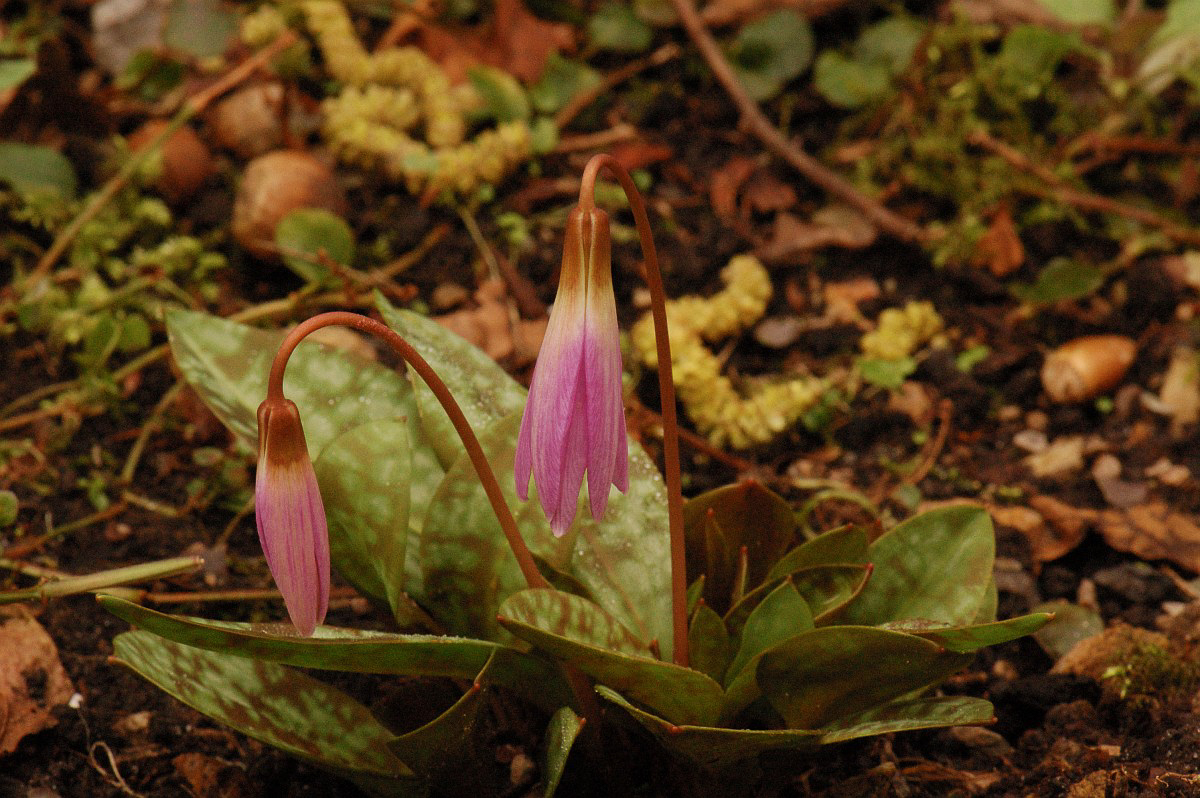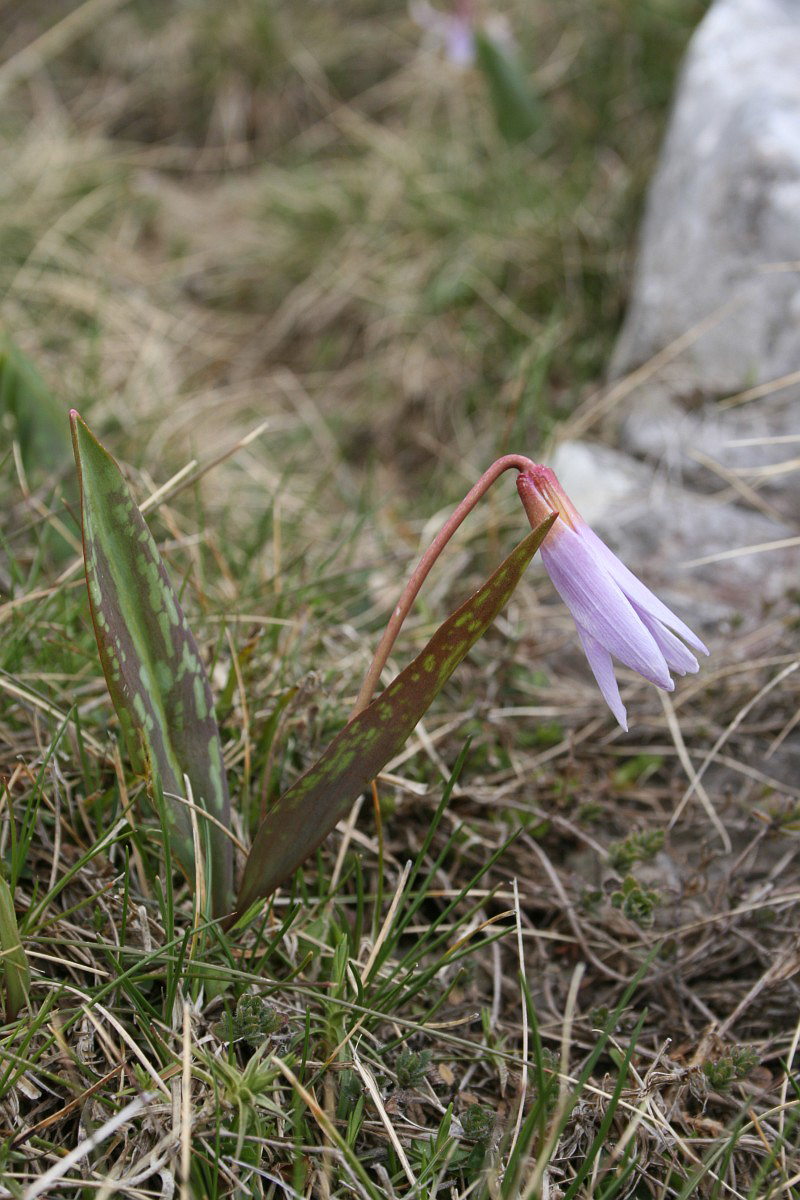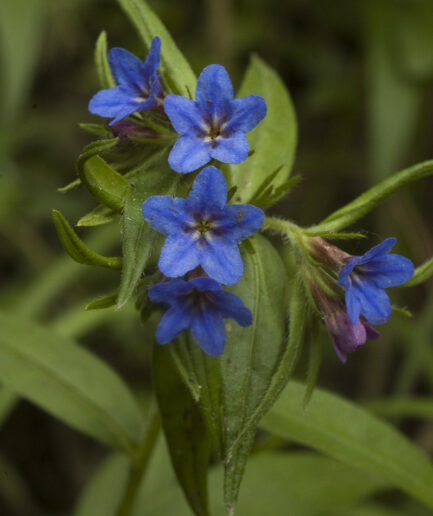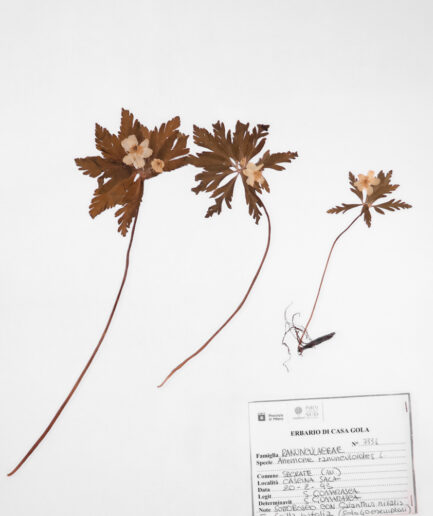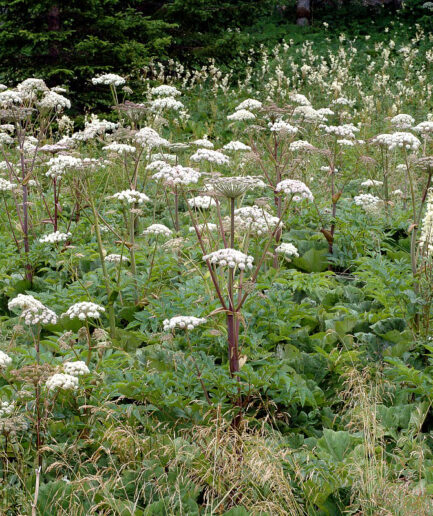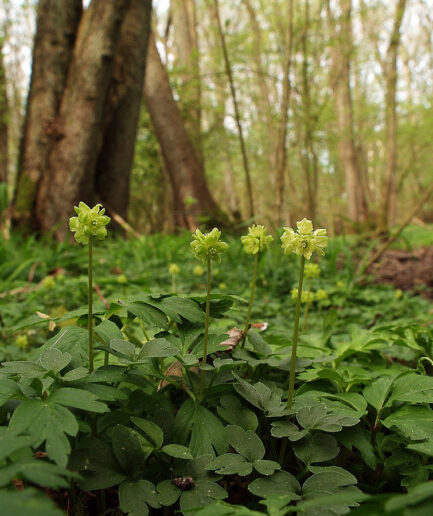Dog’s tooth violet
Scientific Name: Erythronium dens-canis L.
Family: Liliaceae
MORPHOLOGY
Habit and size: Perennial herb with a small oblong bulb shaped like a tooth, covered by a whitish tunic. Height between 10 and 30 cm.
Stem: Stem drooping at the apex and reddish at the top.
Leaves: Usually 2, opposite, glaucous green with light and wine-colored spots on the upper side, tending to lighten at maturity; lanceolate-ovate with entire margin, 4-7 (-15) cm long, petiolate, and 3-4 cm wide. (Sterile plants may have a single leaf that is more oval with brownish spots).
Flowers: Solitary flower on a thin, naked, pendulous stem, with 6 conniving tepals forming a tube at the base, strongly reflexed, in reddish-purple, pink, or white color, with 2-4 nectariferous callosities on the inside. Blooms from February to April.
Fruits and seeds: The fruit is a trigonal capsule containing numerous seeds, 3-6 x 1.3-2.2 mm, oblong-pyriform, initially almost smooth and whitish, then becoming irregularly warty and brownish upon drying, with a widened and curved elaiosome.
DISTRIBUTION AND HABITAT
Found in central and northern Italy in woods and along trails from 0 to 1,300 m.
USE
In Japan, the bulbs are used to produce starch, used for making pasta; in Mongolia, the leaves are used as a common vegetable, and the bulbs are eaten cooked with reindeer milk.
INTERESTING FACTS
Many species belong to this genus, used in gardening and originating from North America. The intensity of the leaf spots partly depends on the environment in which the plant grows; in the undergrowth, they are more intense in color, while they tend to lighten quickly in open areas. They are likely also related to camouflage against herbivore browsing.
Photo: under a free license from Saxifraga and Willem van Kruijsbergen, Jasenka Topic






